Types of Electric Car Jack
An electric car jack is a sophisticated lifting device designed to raise vehicles off the ground to facilitate maintenance practices such as tire changes. With advancements in technology, traditional hydraulic jacks have increasingly been replaced with more efficient electric alternatives. Understanding the different types of electric car jacks can help you choose the right one for your specific needs.
Scissor Jacks
Electric scissor jacks feature a distinctive X-shaped design resembling a pair of scissors. A powerful motor mounted at the center of the X drives the lifting mechanism for efficient operation.
Working Mechanism: During lifting, the electric motor turns the crank in a clockwise direction, causing the two arms of the jack to move inward and push the opposite side blades together. This action expands the top of the jack, raising the vehicle. Lowering is achieved by counterclockwise rotation that retracts the arms.
Best for: Compact cars, emergency roadside use, limited storage space
Ram Jacks
Electric ram jacks utilize hydraulic power for lifting exceptionally heavy loads with minimal effort. They feature a cylindrical, compact design with a robust plunger at the bottom.
Working Mechanism: When activated, the electric motor powers a hydraulic pump that pressurizes fluid. This pressurized fluid pushes against the plunger, creating the lifting force. Lowering is controlled through a precision release valve that returns fluid to the reservoir, gradually reducing pressure.
Best for: Heavy vehicles, professional garage settings, precise lifting control
Trolley Jacks
Electric trolley jacks offer a low-profile design with an impressive lifting range, making them ideal for professional environments. They feature four castor wheels for exceptional mobility across workshop floors.
Working Mechanism: The integrated electric motor drives a powerful hydraulic system for efficient lifting operations. Their design allows for easy positioning under vehicles, while the integrated handle and locking mechanism ensure safe operation during both lifting and lowering procedures.
Best for: Professional workshops, quick vehicle servicing, heavy-duty applications
Bottle Jacks
Electric bottle jacks combine compact design with impressive lifting power in a cylindrical shape resembling a soda bottle. Their space-efficient profile makes them perfect for limited work areas.
Working Mechanism: The lifting mechanism is similar to scissor jacks but powered by an efficient hydraulic system. Electric motors drive this system for smooth lifting and lowering operations. Their design optimizes vertical space rather than horizontal area.
Best for: Tight workspaces, moderate lifting requirements, vertical clearance limitations
Hybrid Jacks
Electric hybrid jacks ingeniously combine manual and hydraulic lifting mechanisms to offer versatility in various working conditions and environments.
Working Mechanism: The hybrid design allows for operation in environments with limited electrical power by offering manual backup capabilities. This versatility makes them suitable for a wide range of lifting tasks including automotive maintenance.
Best for: Remote locations, varying work conditions, backup emergency applications
| Jack Type | Lifting Mechanism | Best Application | Weight Capacity | Portability |
|---|---|---|---|---|
| Scissor Jack | Mechanical screw | Emergency roadside use | 1-2 tons | High |
| Ram Jack | Hydraulic cylinder | Professional garage use | 3-50 tons | Medium |
| Trolley Jack | Hydraulic with wheels | Workshop environments | 1.5-20 tons | Medium |
| Bottle Jack | Hydraulic vertical lift | Tight spaces | 2-50 tons | Medium-High |
| Hybrid Jack | Combined manual/hydraulic | Variable conditions | 1.5-3 tons | High |
Expert Tip: When selecting an electric car jack type, consider not only your immediate lifting needs but also the storage space available in your vehicle. Scissor and hybrid jacks typically offer the best balance of lifting capacity and portability for most personal vehicle emergency kits.
Specifications and Maintenance of Electric Car Jacks
Understanding the key specifications of electric car jacks is essential for selecting the right tool for your vehicle and maintenance needs. These specifications determine the jack's performance, safety, and compatibility with different vehicle types.
Weight Capacity
Different electric car jacks offer varying weight capacities to accommodate vehicles of different sizes and models. Selecting a jack with appropriate weight capacity is crucial for safety and stability during lifting operations.
Safety Note: Always choose a jack with a weight capacity that exceeds your vehicle's weight by at least 25% to provide an adequate safety margin.
Lifting Height
Electric car jacks come with different maximum lifting heights to accommodate vehicles with varying ground clearance. The appropriate lifting height ensures sufficient space for maintenance work underneath the vehicle.
Key Range: Most consumer electric jacks offer lifting ranges between 4-15 inches, while professional models may extend to 20+ inches.
Power Source
Electric car jacks utilize different power sources, including car batteries (12V), rechargeable internal batteries, or direct mains power. The power source affects the jack's portability and convenience in different situations.
Consideration: Battery-powered jacks offer greater mobility for roadside emergencies, while mains-powered options may provide more consistent performance for workshop use.
Construction Material
The material composition of an electric car jack significantly impacts its weight, durability, and corrosion resistance. Common materials include steel for strength and aluminum for weight reduction.
Trade-off: Steel jacks offer superior strength but higher weight, while aluminum provides excellent corrosion resistance with reduced overall weight.
Essential Maintenance Practices
Proper maintenance of an electric car jack is crucial for ensuring safety, reliability, and longevity. Neglecting regular maintenance can lead to dangerous malfunctions during critical lifting operations.
| Maintenance Task | Frequency | Importance | Procedure |
|---|---|---|---|
| Cleaning | After each use | High | Remove dirt, debris, and moisture; wipe with clean cloth |
| Inspection | Monthly | Critical | Check for wear, damage, loose components, and hydraulic leaks |
| Battery Check | Before use | High | Ensure sufficient charge for operation; recharge as needed |
| Lubrication | Quarterly | Medium | Apply appropriate lubricant to moving parts per manufacturer specs |
| Storage | Continuous | Medium | Store in dry location away from extreme temperatures |
Maintenance Tip: Always follow the manufacturer's specific maintenance instructions for your electric car jack model. Different types (scissor, bottle, trolley) may have unique maintenance requirements related to their specific mechanisms and components.
How to Choose an Electric Car Jack
Selecting the right electric car jack requires careful consideration of several critical factors that will determine its suitability for your specific vehicle and usage requirements. Making an informed choice ensures safety, efficiency, and value for your investment.
Load Capacity
The most critical specification to consider is the jack's load capacity. It must exceed your vehicle's weight to ensure safe operation.
Selection Tip: Choose a jack with at least 25-30% more capacity than your vehicle's weight. Most passenger cars require 2-3 ton capacity, while SUVs and trucks may need 4-6 tons or more.
Lifting Range
The minimum and maximum height determines the jack's versatility across different vehicle types.
Ideal Range: Look for a minimum height of 5 inches or lower for low-clearance vehicles, and maximum extension of at least 15 inches for higher vehicles. Sports cars require jacks with very low minimum heights (3-4 inches).
Speed and Efficiency
Lifting speed can be crucial during roadside emergencies when time and safety are paramount concerns.
Benchmark: Quality electric jacks typically lift at 1-2 inches per minute. Premium models may achieve 3+ inches per minute while maintaining stability and control.
Power Source Reliability
The power source affects portability, convenience, and reliability in different usage scenarios.
Consideration: For emergency roadside use, consider dual-power options that can use both the vehicle's 12V outlet and built-in rechargeable batteries as backup.
| Selection Factor | Importance | Considerations | Recommended Specifications |
|---|---|---|---|
| Load Capacity | Critical | Vehicle weight, safety margin | 25-30% above vehicle weight |
| Construction Material | High | Durability, weight, corrosion resistance | Steel for durability, aluminum for portability |
| Safety Features | Critical | Overload protection, stability mechanisms | Auto-stop, safety lock, non-slip base |
| Portability | Medium-High | Weight, dimensions, storage options | Under 10 lbs for emergency kits |
| Ease of Use | High | Interface, controls, operation complexity | One-button operation, clear instructions |
| Price | Variable | Budget constraints, feature requirements | $50-150 for consumer models, $200+ for professional |
Selection Tip: When choosing between different electric car jack models, prioritize safety features and appropriate load capacity over convenience features like remote controls or LED lights. While added features enhance usability, they should never come at the expense of the jack's primary safety and lifting functions.
How to DIY and Replace Electric Car Jack
Properly using and replacing an electric car jack requires attention to detail and adherence to safety procedures. Follow this comprehensive guide to ensure safe and effective operation during maintenance or emergency situations.
Step-by-Step Replacement Guide
- Prepare and Understand - Thoroughly read the user manual to understand the specific operation procedures for your electric car jack model. Familiarize yourself with all controls and safety features before proceeding.
- Locate the Release Valve - Identify and open the release valve on the jack. This is typically a knob or lever that controls the hydraulic pressure in the system.
- Position the Handle - Correctly position the handling mechanism and prepare to lower the jack to its fully retracted position to ensure proper operation during the replacement process.
- Depressurize the System - Manually push the jack body downward to release any trapped air and completely depressurize the hydraulic system before removing it from service.
- Secure the Valve - Close the release valve securely to prepare the system for pressurization during the testing phase of the replacement procedure.
- Test Operation - Operate the handle to begin pumping the jack and observe the pressure gauge during operation to ensure proper function.
- Monitor Pressure - Continue operation until the pressure gauge indicates the appropriate level (typically in the green zone) to verify system integrity.
- Complete Reset - Open the release valve again to lower the pressure, completing a full operational cycle and confirming proper function before final installation.
Critical Safety Precautions
- Always work on level, solid ground when using or replacing an electric car jack
- Never exceed the maximum rated weight capacity of the jack
- Use jack stands to support the vehicle before working underneath it
- Keep all body parts clear of the vehicle and jack during lifting operations
- Follow manufacturer's specific instructions for your jack model
- Verify the replacement jack meets or exceeds the specifications of the original
- Test the new jack with a lighter load before using it at full capacity
- Keep children and pets away from the work area during jack operation
DIY Tip: When replacing an electric car jack, take photos of the original installation position and connections before removal. This visual reference will make the replacement process much easier, especially for complex systems with multiple attachment points or electrical connections.
Questions and Answers
To ensure your electric car jack is working properly, perform regular inspections and operational tests:
- Visual Inspection: Check for physical damage such as cracks, dents, or wear on cables, hydraulic components, and structural elements
- Test Operation: Conduct a no-load test by operating the jack through its full range of motion, observing for smooth, consistent movement
- Load Testing: Perform a controlled test lift with approximately 50% of its rated capacity, confirming stable and even lifting
- Battery Check: Verify the battery charge status is sufficient for complete operation (most electric jacks have indicator lights)
- Hydraulic System: Look for any fluid leaks or seepage around hydraulic components
- Control Response: Ensure all buttons, switches, and remote controls function correctly with minimal delay
A properly functioning electric car jack should operate smoothly, maintain its position when stopped, and respond immediately to controls without unusual noises or vibrations.
The most common material for quality electric car jacks is steel, which offers several significant advantages:
- Superior Strength: Steel provides exceptional structural integrity capable of supporting heavy vehicles safely
- Durability: Steel jacks withstand repeated use and the stresses of lifting operations over many years
- Stability: The weight and rigidity of steel contribute to greater stability during lifting operations
- Cost-Effectiveness: Steel offers an excellent balance of performance and affordability compared to exotic materials
- Load Distribution: Steel's structural properties allow for better distribution of weight forces throughout the jack
While aluminum jacks are also available and offer weight savings and corrosion resistance advantages, steel remains the material of choice for most professional-grade electric car jacks due to its superior strength-to-cost ratio and proven reliability in demanding applications.
Yes, electric car jacks can generally be used for all types of electric vehicles, provided they meet the specific requirements:
- Weight Capacity: The jack must be rated to safely support the vehicle's weight with an appropriate safety margin
- Lifting Points: Electric vehicles often have designated jacking points that must be used to prevent damage to the battery pack
- Ground Clearance: Some electric vehicles have lower ground clearance, requiring jacks with a lower minimum height
- Manufacturer Guidelines: Always follow the vehicle manufacturer's specific recommendations for jacking procedures
When selecting an electric jack for an electric vehicle, pay special attention to the vehicle's weight distribution, which may differ from conventional vehicles due to battery placement. Some high-performance or specialized electric vehicles may have specific jacking requirements outlined in their owner's manual.
Proper maintenance of an electric car jack ensures safety, reliability, and longevity. Follow these essential maintenance practices:
- Regular Cleaning: After each use, clean the jack thoroughly to remove dirt, dust, and moisture that could cause corrosion or mechanism failure
- Inspection Schedule: Conduct monthly visual inspections of all components, including the jack body, hydraulic system, electrical connections, and controls
- Battery Maintenance: For battery-powered models, follow the manufacturer's recommendations for charging cycles and battery storage to maximize battery life
- Lubrication: Apply appropriate lubricant to moving parts according to the manufacturer's specifications and recommended schedule
- Hydraulic Fluid Check: For hydraulic models, regularly inspect fluid levels and condition, replacing as recommended (typically every 1-2 years)
- Storage Conditions: Store the electric car jack in a clean, dry environment away from extreme temperatures and direct sunlight
- Operational Testing: Periodically test the jack through its full range of motion without a load to ensure smooth operation
- Professional Service: Have the jack professionally inspected and serviced annually, especially for high-capacity models used frequently
Always follow the specific maintenance guidelines provided by the manufacturer for your particular model to ensure optimal performance and safety.
If you discover damage to your electric car jack, follow these important safety steps:
- Immediate Discontinuation: Stop using the damaged jack immediately to prevent potential accidents or injuries
- Comprehensive Assessment: Thoroughly evaluate the extent and nature of the damage to determine whether repair is possible
- Manufacturer Consultation: Contact the manufacturer or an authorized service center for professional guidance on repair options
- Genuine Parts: If repairs are feasible, use only genuine replacement parts specifically designed for your jack model
- Professional Repair: For hydraulic system damage, electrical issues, or structural damage, seek professional repair services rather than attempting DIY fixes
- Replacement Decision: If the damage compromises the jack's structural integrity or safety features, complete replacement is often the safest option
- Proper Disposal: If replacement is necessary, dispose of the damaged jack according to local regulations for electronic and hydraulic equipment
Never attempt to use a damaged jack or implement temporary fixes, as this could lead to catastrophic failure during operation and pose serious safety risks. Safety should always be the priority when dealing with lifting equipment.





























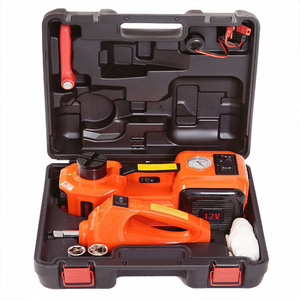










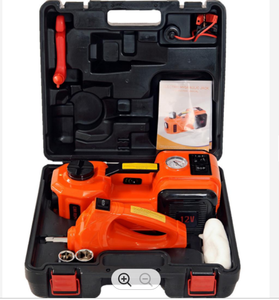


















































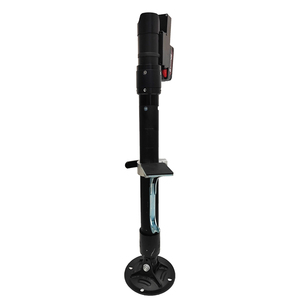








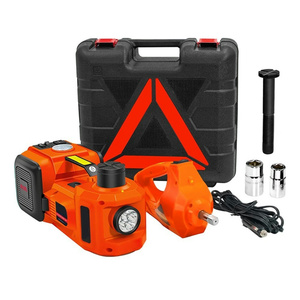









































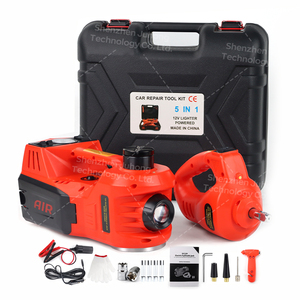





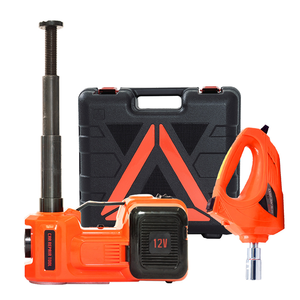











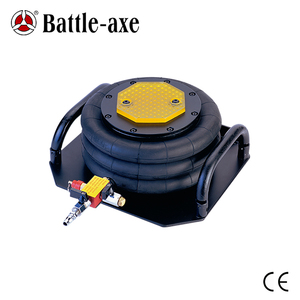




















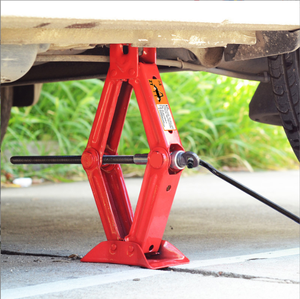


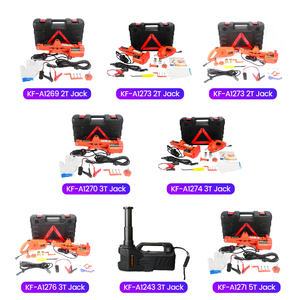


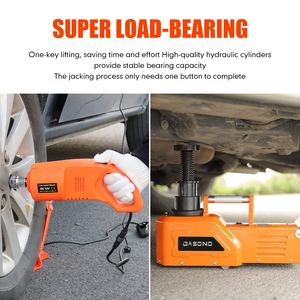







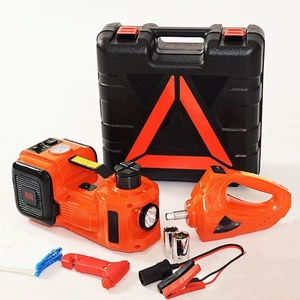










































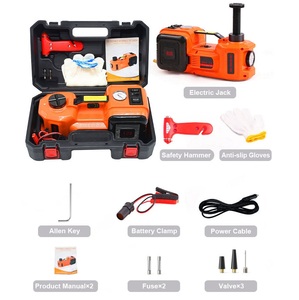



















 浙公网安备 33010002000092号
浙公网安备 33010002000092号 浙B2-20120091-4
浙B2-20120091-4